It doesn’t have the best pubic relations name: Latex Strangler Vine. But you have to realize it was named decades ago by citrus growers. The vine, which can easily grow over 100-feet long, happily covered low-growing citrus trees shading out the sun and killing the tree. The state of Florida has spent millions of dollars trying to control and eradicate it. In tropical American it’s what’s for dinner.
The vine has been in the state about 78 years. Under cultivation in 1939 in Pasco County, by the mid-1950s it was showing up in citrus groves in Orange County about 100 miles due east. That’s when it came to the state’s attention and became an official problem. While it might have made it onto the state’s noxious weed list it did not make its way into wild foraging books. Perhaps that’s because in other parts of the word it’s a staple. The plant highlights two different mentalities. To one population it is daily food, to another it’s not food but a threat to income.
While it was one of the plants banned by citrus industry one doesn’t hear about it much now. It has greener issues to contend with. I find the Latex Strangler Vine not in groves but on the land around them. It also likes to grow on hedges and fences. In Blanchard Park it is on ornamentals by the tennis courts, in Winter Park it is near a dentist’s office on a hedge, on the West Orange Bike Trail it is on a pond fence and many miles away on the same trail on a subdivision fence. I see it on chain link fences driving in to Winter Garden and on junk yard fences in west Orlando. It is even in one protected site in Ocala in Jervey Gantt Park. If you look for the vine you will find it. To read more about the Latex Strangler Vine go here.
Podocarpus is afoot which makes sense as its name means Foot Fruit. Locally August is ripening time for the plant’s arils which we eat. We do not eat the seed on the end. Just the aril. They resemble grapes in taste and texture and can be used like them as well. Podocarpus macrophyllus is almost impossible not to find. It is an extremely common hedge plant in suburbia. Hardly a subdivision or a shopping center is not without a row of podocarpus. They are usually heavy with fruit but trimming at the wrong time can leave them fruitless. If left on their own — that is not trimmed into a perpetual hedge — them make nice trees similar to pines. And while August is their ripening time locally that only holds true if they are a hedge. I know where there are four podocarpus trees and they fruit in December. I don’t know why and I can’t explain it. They just do. To read more about the podocarpus go here.
There’s much confusion about the American Nightshade. For some the name alone conjures up death. There are several reason why this is so. First is European prejudice. Settlers assumed nightshades in the Americas were toxic like nightshades in Europe (I know someone now who still thinks tomatoes are poisonous, not allergenic but actually poisonous like Belladonna.) Botanists didn’t help foraging things by changing the names and getting various species widely confused. And lastly indeed the unripe berries of the American Nightshade are toxic, how toxic depends on how many and how old you are. A few can sicken a child, it takes more to bring down an adult. However, totally ripe berries are, as they, say sub-acid and edible. The flavor ranges from nice and perfumey to uninteresting. I’ve also found some in Ocala — always in the same place — that are bitter even when ripe. I don’t eat those. To read more about this maligned edible go here.
OMG is now official. Nearly four years ago I created several Facebook pages about mushroom because I wanted to know more about them. Two pages I worked on and two I did not. Since then Florida Mushroom Identification Forum and the Southeastern U.S. Mushroom Identification page have done well. I kept Edible Mushrooms: Florida kind of a secret but folks found it anyway and this year it grew. So it was time to populate and promote Orlando Mushroom Group. Besides, I wanted OMG. The goal is to also have mushroom forages and start a group that actually meets in person. There are nearly none of those in Florida like there are in most places around the country. So OMG is open for fungal business and we will have our first hunt and class next month!
Because I am attending a fungal fair on Saturday I have only one foraging class this week, in Jacksonville. The class size is currently small which usually means more personal attention and a class under four hours because of less questions and smaller groups move faster.
Sunday, August 27th, Florida State College, Jacksonville, this class will be rescheduled later in September.
Saturday, September 2nd, Boulware Springs Park, 3420 SE 15th St., Gainesville, FL 32641. 9 a.m.
Sunday, September 10th, Dreher Park, 1200 Southern Blvd., West Palm Beach, 33405, 9 a.m.
Sunday, September 17th, John Chestnut County Park: 2200 East Lake Road, Palm Harbor, FL 34685. 9 a.m.
For more information go here.
All of Green Deane’s videos available for free on You Tube. They do have ads on them so every time you watch a Green Deane video I get a quarter of one cent. Four views, one cent. Not exactly a large money-maker but it helps pays for this newsletter. If you want to see the videos without ads and some in slightly better quality you can order the DVD set. It is nine DVDs with 15 videos on each. Many people want their own copy of the videos or they have a slow service and its easier to order then to watch them on-line. They make a good gift for that forager you know. Individual DVDs can also be ordered. You can order them by clicking on the button on the top right of this page or you can go here.
Want to identify a plant? Looking for a foraging reference? Do you have a UFO, an Unidentified Flowering Object you want identified? On the Green Deane Forum we chat about foraging all year. And it’s not just about warm-weather plants or just North American flora. Many nations around the world share common weeds so there’s a lot to talk about. There’s also more than weeds. The reference section has information for foraging around the world. There are also articles on food preservation, and forgotten skills from making bows to fermenting food. One special section is “From the Frightening Mail Bag” where we learn from people’s mistakes. You can join the forum by clicking on the button on the upper right hand side of this page.
This is issue 271.
If you would like to donate to Eat The Weeds please click here.

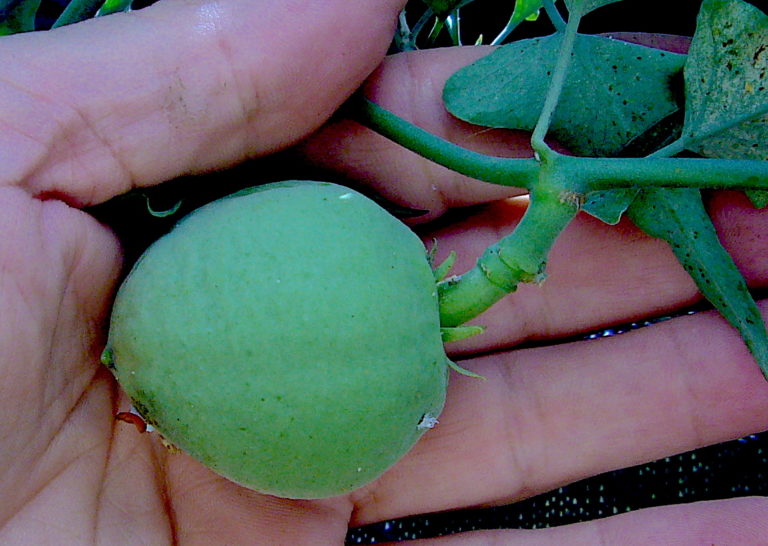
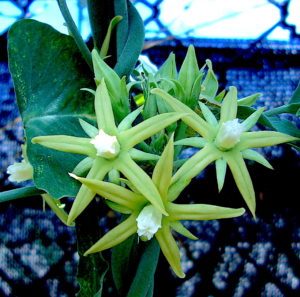
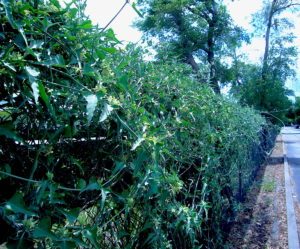
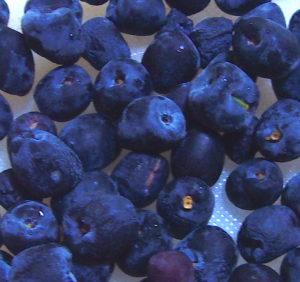
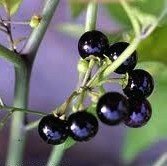
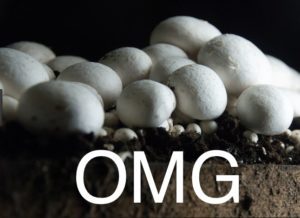
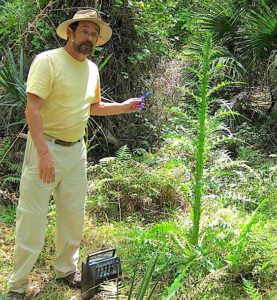

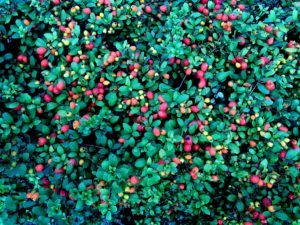

You won’t believe this, but we’ve got colonies of ripe Gopher Apples all the way up here in the Panhandle in the Apalachicola National Forest. I always thought they only grew down South – but here they are, much to my delight.
Thanks, this is my first newsletter, very informative. I like to optimize well being and learned that since the roots of wild edibles can go done over 200 feet, they can offer ideal mineralization and other exceptional nutrients. Variety seems beneficial, too, so this topic seems very lively.
With respect to size – and age of fruits – I’ve observed this to apply even when collecting some big ( old )lemons fallen off due to wind and others small ( young ) ones picked directly by hand from the tree. The former were lighter with fainter lemon smell.
About the latex strangler vine, which has the ability to grow here at any time, is really troublesome to most citrous fruit trees including my grape vine.One of its benefits to me was the good jasmin like fragrance I used to smell from one plant previously intruded my house from my neighbour’s garden.
American Nightshade is at present growing in abundance in my back garden – many fruiting. I’m waiting to collect the ripe berries in order to dry them .They excell ” Sultanas ” in taste.I had experienced tasting them once.
I found it! After looking since the mid to late 90s. Of all places of course a construction site.
The “Ground Cherry” heck yeah been a long time. Its a great specimen with lots of fruit almost ready. Here is the catch, they are going to trash it.As this is a construction site. I guess I will give them ad much time as I can then dig it up take extra soil from here and try to grow it at home.
I hope it works ad it is located in the Villages and I live in Casselberry almost 60 miles South.
John Bland
I really enjoy your newsletter every month. Thanks for all you do to help folks learn about the plants around us here in the flower state!
Thanks, and the newsletter is weekly not monthly.